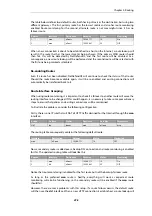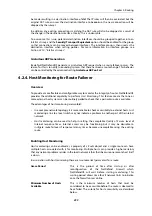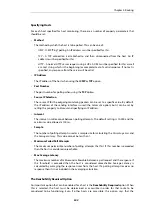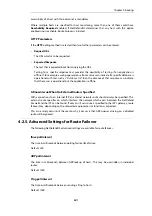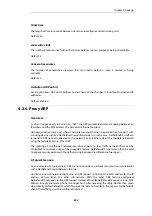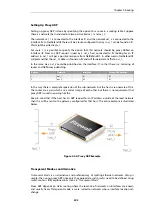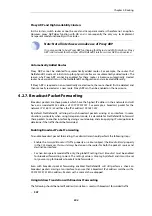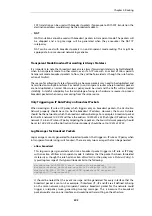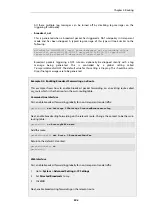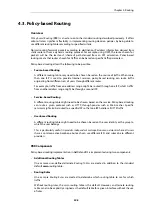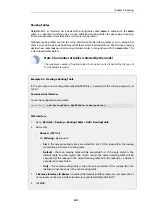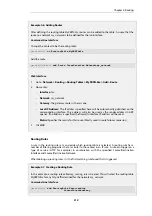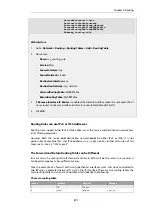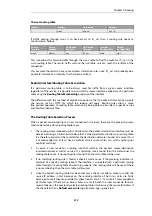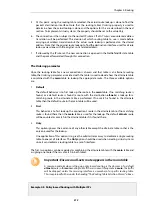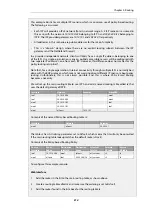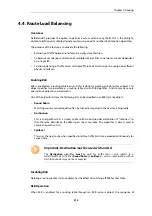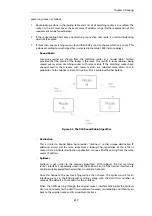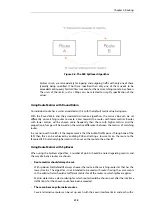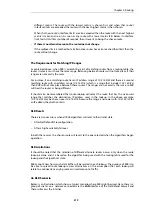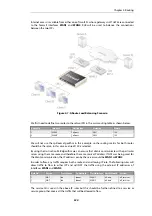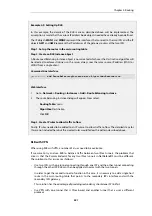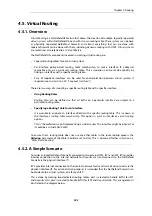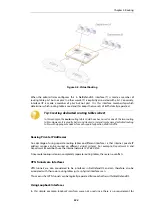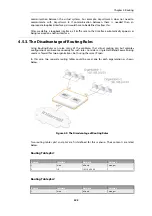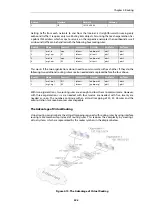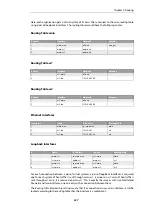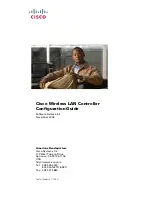
The isp2 routing table
Index #
Interface
Destination
Gateway
1
wan2
all-nets
isp2_ip
If traffic coming through
wan2
is to have access to
If1_net
then a routing rule needs to
constructed as follows:
Source
Interface
Source
Network
Destination
Interface
Destination
Network
Forward
Routing Table
Return
Routing Table
wan2
all-nets
any
If1_net
main
isp2
This rule allows the forward traffic through the
wan2
table to find the route for
If1_net
in the
main
routing table. The return traffic will use the
isp2
table so it can reach the initiator of the
connection.
This example should also have some address translation rules since
If1_net
will probably be a
private IP network. For simplicity, that has been omitted.
Explicit Interface/Routing Table Association
If a particular routing table is to be always used for traffic from a given source interface,
regardless of the service, it is possible to associate the source interface explicitly with a particular
table using the Routing Table Membership property of the interface.
The difference with this method of explicit association is that the administrator cannot specify
the service, such as HTTP, for which the lookup will apply. Routing rules allow a more
fine-grained approach to routing table selection by being able to also select a specific service
and interface/network filter.
The Routing Table Selection Process
When a packet corresponding to a new connection first arrives, these are the processing steps
taken to determine which routing table to use:
1.
The routing rules are looked up first. To allow this, the packet’s destination interface must be
determined using an initial route lookup that is always performed in the
main
routing table.
It is therefore important that a match for the destination network is found. To ensure this, it
is recommended to at least have a default
all-nets
route which can catch anything not
explicitly matched.
2.
A search is now made for a routing rule that matches the packet's source/destination
interface/network as well as service. If a matching rule is found then this determines the
routing table to use. If no routing rule is found then the
main
table will be used.
3.
If no matching routing rule is found, a check is made to see if the receiving interface is a
member of a specific routing table. If the interface is associated with a particular routing
table through its
Routing Table Membership
property, that routing table will be used. If there
is no membership then the
main
table will be used.
4.
Once the correct routing table has been located, a check is made to make sure that the
source IP address in fact belongs on the receiving interface. The
Access Rules
are firstly
examined to see if they can provide this check (see
for more details
of this feature). If there are no Access Rules or a match with the rules cannot be found, a
reverse lookup in the previously selected routing table is done using the source IP address. If
the check fails then a Default access rule log error message is generated.
Chapter 4: Routing
312
Summary of Contents for NetDefendOS
Page 30: ...Figure 1 3 Packet Flow Schematic Part III Chapter 1 NetDefendOS Overview 30 ...
Page 32: ...Chapter 1 NetDefendOS Overview 32 ...
Page 144: ...Chapter 2 Management and Maintenance 144 ...
Page 284: ...Chapter 3 Fundamentals 284 ...
Page 392: ...Chapter 4 Routing 392 ...
Page 419: ... Host 2001 DB8 1 MAC 00 90 12 13 14 15 5 Click OK Chapter 5 DHCP Services 419 ...
Page 420: ...Chapter 5 DHCP Services 420 ...
Page 573: ...Chapter 6 Security Mechanisms 573 ...
Page 607: ...Chapter 7 Address Translation 607 ...
Page 666: ...Chapter 8 User Authentication 666 ...
Page 775: ...Chapter 9 VPN 775 ...
Page 819: ...Chapter 10 Traffic Management 819 ...
Page 842: ...Chapter 11 High Availability 842 ...
Page 866: ...Default Enabled Chapter 13 Advanced Settings 866 ...
Page 879: ...Chapter 13 Advanced Settings 879 ...

